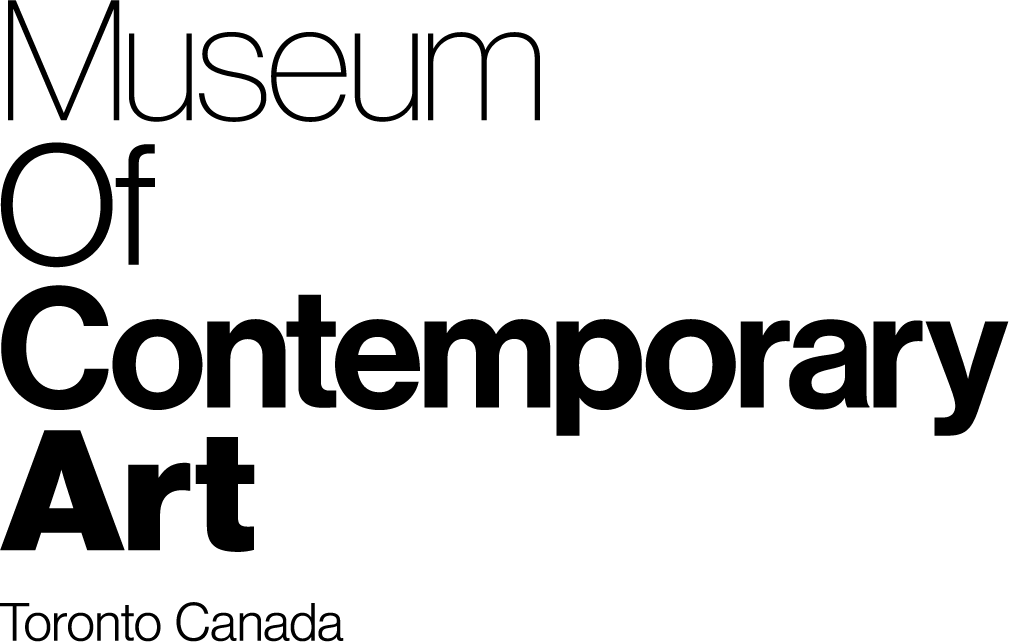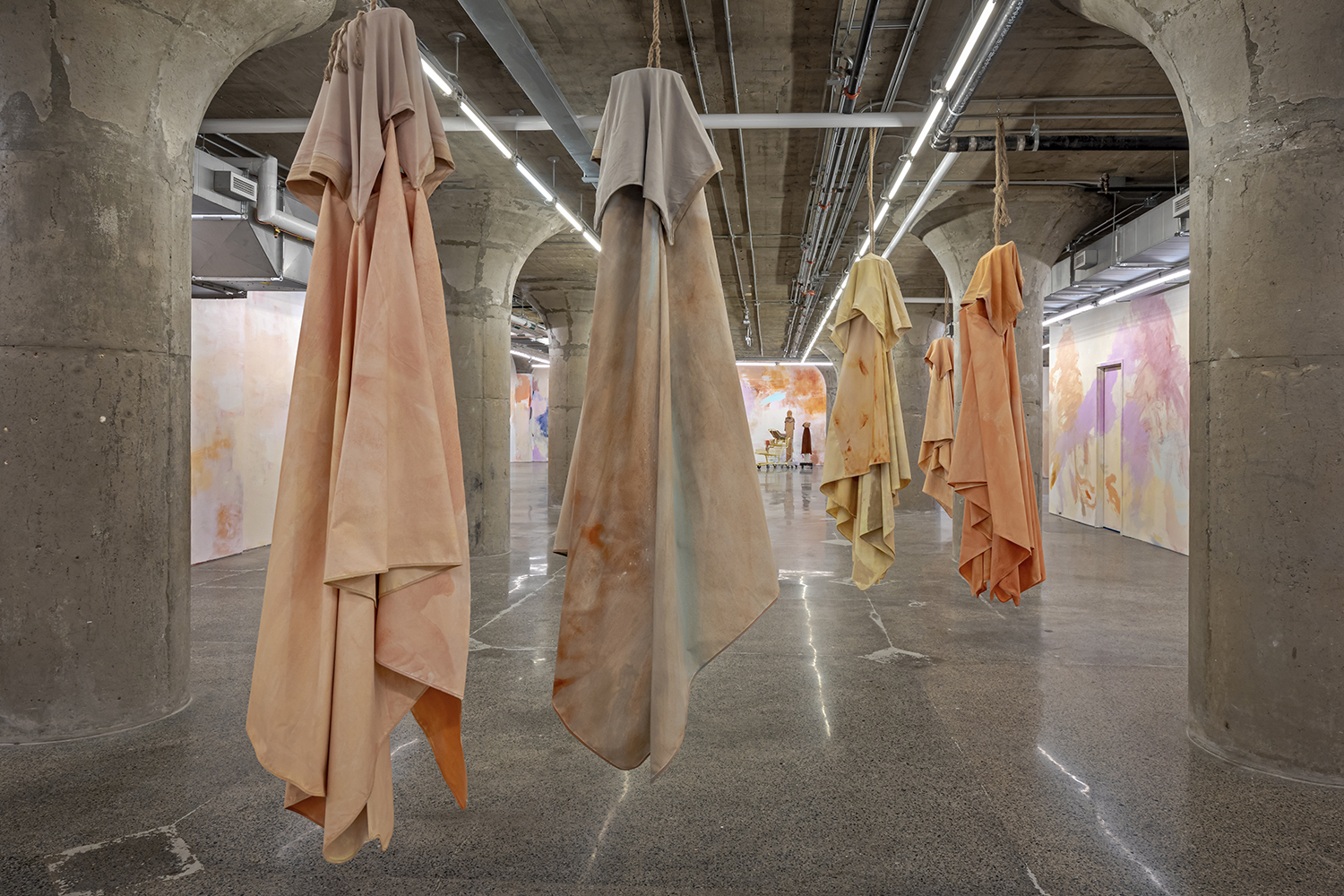The mural is alive. Incarnadine, blush, radicchio, red, pitch black, blue, citron, and churlish green. The colours move. They twist, turn, cajole, guide, lure, seduce: they push you and they pull you around, whether you like it or not. In Megan Rooney’s expansive, inter-disciplinary practice, that’s what art does: it asks you to pay attention, to look again, to enter it whole—to risk it all.
The world of HUSH SKY MURMUR HOLE—for it is that, a cosmos—is contained by a painted, encircling skin of the same name. Rooney has long been interested in colour, and how it is wedded to memory—the ways in which it can both forge and summon an environment. Made in situ, the arcs and smudges, the eddies and smears of the mural are painted intuitively. As the artist’s body responds to the particulars of the space, the work begins to generate itself: a logic that grows like a crystal, unfurls, and takes hold of the atmosphere. Within this landscape, we are confronted by objects strange and familiar. Things wrapped and bound, things rusty and faded, things spattered and smoky: things collected and reassembled, made into new, wayward rulers of their formerly humble material properties.
At one turn, round a bulbous column, painted barrels arrayed in communion surprise with their hued and dented bodies. At another, a trolley of snakes grin lazily, taunting us with their inscrutable slits of eyes; their pastel fabric bodies curl and ply against their metal confines. Painted damask sentinels, bandaged with mesh and wool, threaten to roll towards us like little stitched monsters, spill their birdseed coffins, offer us a cigarette. Hanging from the ceiling, hovering over lumpen figures beneath, three hooded graces sway, their forms hue-sodden and marked with an accretion of traces. Like flowers made too heavy to open and see the sky—but what if they did? Who are they? Do they scold or console? Mourn or revere? Have they come from another time? Did they bring this rotting fruit that cloys the nostrils? And the bag-headed kin beneath, with their coral and singed utility wool skin, do they slump, pray, wait? For what?
Coursing beneath the surfaces of Rooney’s objects, stained and seductive, is an undercurrent of fear twined with insouciance — a revelry in the tender, spectacular qualities of everyday detritus and how it can be connected to other materials and contexts. The grace of cheap luxuries transformed and all the potential narratives evoked by a collection of things bound by place and affinity — a kind of family resemblance that is like the afterglow, burn, sear of a hot image on the retina. What does it mean to look at the world around you and translate what you see into marks, images, forms?
Rooney’s references engage with materiality and the human subject and are deeply invested in the present moment: the festering chaos of politics, with its myriad cruelties so resident in the home, in the female, in the body. And what will this hot, violent existence look like, once it’s all over? What did we do with our bodies? Was it enough? How did we learn to acknowledge them, or not, through our extravagant rituals of adoration, procurement, disregard, and loss? Through our expensive festivals of death and ruin? This is not an exaggeration. This is not a drill. As Rooney’s work intimates with agile acuity, we have joy, we have pleasure, we have colour, we have storytelling, movement, tenderness, intuition, faith. But something is really wrong. The mural is alive, but it won’t always be.
by Emily LaBarge; text commissioned by MOCA for Megan Rooney’s exhibition HUSH SKY MURMUR HOLE


